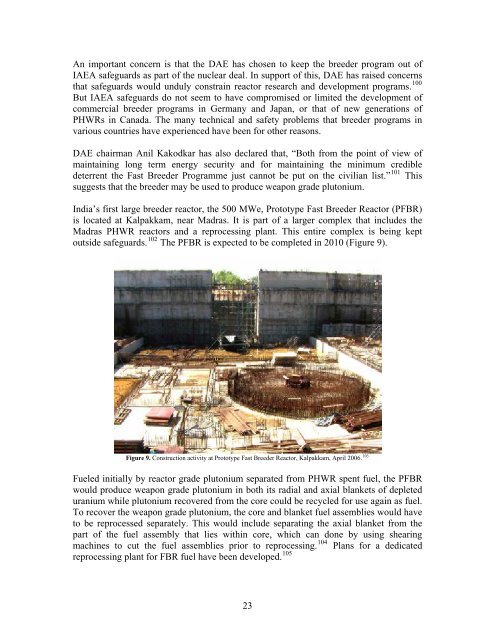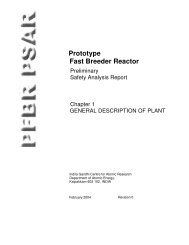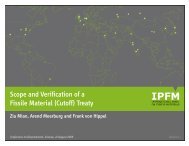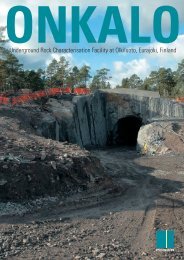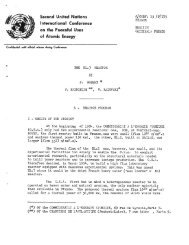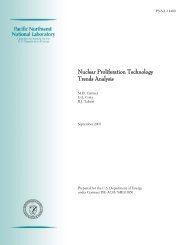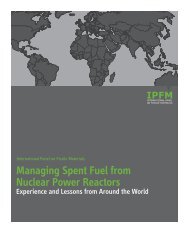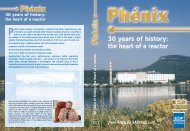Research Report No - International Panel on Fissile Materials
Research Report No - International Panel on Fissile Materials
Research Report No - International Panel on Fissile Materials
You also want an ePaper? Increase the reach of your titles
YUMPU automatically turns print PDFs into web optimized ePapers that Google loves.
An important c<strong>on</strong>cern is that the DAE has chosen to keep the breeder program out of<br />
IAEA safeguards as part of the nuclear deal. In support of this, DAE has raised c<strong>on</strong>cerns<br />
that safeguards would unduly c<strong>on</strong>strain reactor research and development programs. 100<br />
But IAEA safeguards do not seem to have compromised or limited the development of<br />
commercial breeder programs in Germany and Japan, or that of new generati<strong>on</strong>s of<br />
PHWRs in Canada. The many technical and safety problems that breeder programs in<br />
various countries have experienced have been for other reas<strong>on</strong>s.<br />
DAE chairman Anil Kakodkar has also declared that, “Both from the point of view of<br />
maintaining l<strong>on</strong>g term energy security and for maintaining the minimum credible<br />
deterrent the Fast Breeder Programme just cannot be put <strong>on</strong> the civilian list.” 101 This<br />
suggests that the breeder may be used to produce weap<strong>on</strong> grade plut<strong>on</strong>ium.<br />
India’s first large breeder reactor, the 500 MWe, Prototype Fast Breeder Reactor (PFBR)<br />
is located at Kalpakkam, near Madras. It is part of a larger complex that includes the<br />
Madras PHWR reactors and a reprocessing plant. This entire complex is being kept<br />
outside safeguards. 102 The PFBR is expected to be completed in 2010 (Figure 9).<br />
Figure 9. C<strong>on</strong>structi<strong>on</strong> activity at Prototype Fast Breeder Reactor, Kalpakkam, April 2006. 103<br />
Fueled initially by reactor grade plut<strong>on</strong>ium separated from PHWR spent fuel, the PFBR<br />
would produce weap<strong>on</strong> grade plut<strong>on</strong>ium in both its radial and axial blankets of depleted<br />
uranium while plut<strong>on</strong>ium recovered from the core could be recycled for use again as fuel.<br />
To recover the weap<strong>on</strong> grade plut<strong>on</strong>ium, the core and blanket fuel assemblies would have<br />
to be reprocessed separately. This would include separating the axial blanket from the<br />
part of the fuel assembly that lies within core, which can d<strong>on</strong>e by using shearing<br />
machines to cut the fuel assemblies prior to reprocessing. 104 Plans for a dedicated<br />
reprocessing plant for FBR fuel have been developed. 105<br />
23


